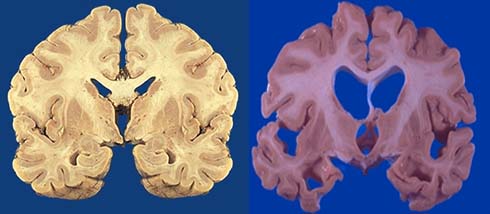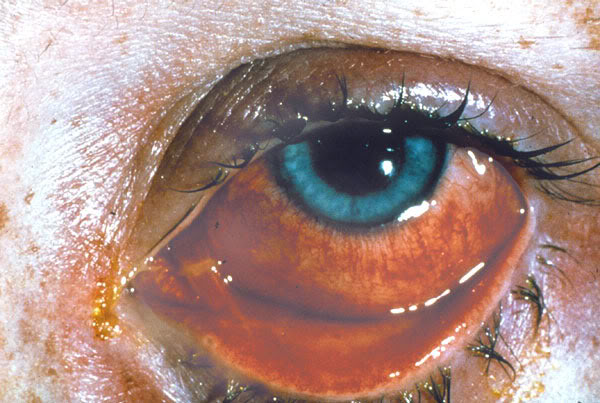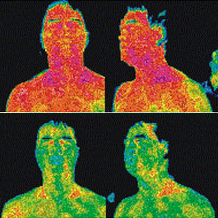

Historical Tales | News | Vampires | Zombies | Werewolves
Virtual Academy | Weapons | Links | Forum
 |
 |
Historical Tales | News | Vampires | Zombies | Werewolves Virtual Academy | Weapons | Links | Forum |
Return to Zombic Virology
For a more detailed account, click here.
 |
|
Cross-sections of a normal brain and a zombic brain show the extensive atrophy of the latter. |
Brain:
Contrary to most fiction, zombies are able to survive an enormous loss of brain tissue, as long as the lower brainstem remains intact. For instance, former FVZA zombie specialist Dr. Waxman Himmelburger tells of encountering a zombie who had lost over three quarters of its head from a shotgun blast, with no apparent effect.
Spine/Nervous System:
Zombies have exhibited the ability to withstand significant trauma to their central and peripheral nervous system. In a famous series of experiments conducted by FVZA scientists in 1972, zombies who had their spinal cords severed regained the ability to walk within 24 hours. Thus far, researchers have been unable to unlock the mechanism for this process of repair.
Dopamine/Endorphins: The smell and taste of living flesh trigger a large release of these adrenaline-like neurotransmitters into the zombic brain.
 |
| Ocular close-up of an early-stage zombie |
Hearing:
Infection and eardrum perforation cause zombies to lose about 50 percent of their hearing within a few weeks of transformation. Complete deafness sets in within another month as necrosis spreads further into the ear.
Smell:
Zombies have even more sensory cells than vampires. If the wind is right, zombies can smell humans from as far as a mile away.
 |
|
The extremities are the first to experience necrosis. |
Skin: Starting off pale and ashen, decay sets in shortly after transformation, becoming more jaundiced over the course of a week as liver function degrades. Gradually consumed by open sores, the skin turns dark and leathery before sloughing off completely.
Hair/Nails: Zombies who live long enough will lose all these keratin-based tissues.
 |
|
A normal jaw (L) and a zombic jaw (R). Note the larger jawbone and thicker muscle of the latter. |
Skeletal System: Important modifications occur to the zombic jaw: extra bone is deposited on the lower mandible to form an attachment point for larger chewing muscles. These adaptations enable zombies to bite through skull and bone to get at the pillars of their diet: brains and bone marrow. As with vampires, a zombie's entire skeleton hardens and thickens as it ages.
Teeth: Although early-stagers are smart enough to use heavy objects (or the pavement) to shatter skulls, older zombies are much less savvy in their eating habits. Unfortunately, zombic teeth are not adapted to the powerful forces exerted on them by the jaw, causing them to crack and fall out. Eventually, all the teeth are gone, and the zombie is forced to chew with its exposed jawbones.
 |
| A pool of dried zombie blood |
Blood: Saturated with extra iron and bile with additional erythrocytes, zombic blood is thick and dark, hence the nickname "zombie oil."
Heart: As with vampires, zombic blood is pumped by skeletal muscle rather than the heart. However, the rate of circulation is much slower, hence the tissue necrosis.
 |
|
Before (top) and after (bottom) thermal imaging of the transformation |
A long-held, common misconception is that zombies are immortal, when in actuality the vast majority of them live less than a year. It is possible to determine a zombie's age based on their external appearance—specifically, their level of decomposition, also known as necrotic degradation.
 |
| The three stages of necrotic degradation |
|
Stage I: 1-3 months. The skin is mottled, flaking, peeling and covered with open sores.
Stage II: 4-6 months. The ears, lips, nose and eyelids are rotting away; loss of skin, teeth, hair, nails, fingers and toes. Bacterial breakdown of dead tissue causes bloating and eventual splitting of epidermis. Stage III: 7-9 months. Body is emaciated, with large areas of exposed muscle and bone; loss of facial features, breasts, genitals and likely limbs. Outer tissues are dry, tough and leathery. Most of the hair and teeth are gone, and one or both eyes fall out. |